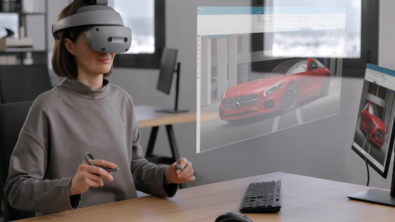A developing battery ecosystem

Much like the natural world, industry and business rely on cooperative ecosystems to produce the best outcomes. For established industries that often focus on the supplier and manufacturer relationships, but there are more facets to understand in new and growing industries. That is definitely the case for batteries as they find a larger role in electrifying our world and becoming less carbon-intensive. To help our customers and the wider cohort of engineers, business folks, investors, and even the general public understand what the battery ecosystem means for growth and innovation, we helped put together a panel of voices from across the industry. Beyond the supplier and manufacturer, the ecosystem includes research from academia for new chemistries and processes, as well as integrating the development of machines to best grow the industry.
For those who couldn’t make it to the event in person, we’ve published the conversation as an episode of the Battery Podcast from Siemens. But because we know not everyone has the time for the full conversation, let’s dive into a high-level summary of this awesome panel on the battery ecosystem.
The question of experience and access
Having access to qualified employees is a major topic for the battery industry as it expands beyond the traditional manufacturing centers in Asia. Without the expertise, it would be difficult, if not impossible, to make these new manufacturing centers thrive. Sebastian Wolf of PowerCo also mentioned the need for these new manufacturers to acquire the right equipment for their facilities to operate. For an OEM on their own, filling these needs is a difficult task. But that is why nurturing the battery ecosystem is so important. Universities not only help train the pool of talent for these new factories, but by localizing some of the research and development surrounding manufacturing, new solutions can be uncovered to better compete with incumbent players in the space or work within the different regulatory bounds.
For machine builders in the space, the goal is to provide manufacturers with shorter lead times while ramping up production. That might mean modularizing machines so that customers gain the value in economies of scale, as Dr. Stephen Witt of Jagenberg mentions in the discussion. But the machine builder’s role in the battery ecosystem also helps ramp up production during the earlier development stages of factory planning. By understanding how a machine will not only fit inside a factory environment, but how different selections will impact the material flow, employee training, or maintenance process creation for a manufacturer.
Common communication
Also analogous to the wider world, there are many different ways the parts of an ecosystem communicate. Even if through a common language, the experience and understanding between researchers, manufacturers, machine builders, and every other part of the ecosystem can slow innovation and growth. This is partly where Siemens shows its value to the industry – in understanding the many different processes to industry and in providing the tools to accelerate innovation digitally. Through simulation tools, both students and machine builders can better understand the manufacturing environment. Manufacturers can optimize their processes to fit what is possible from machine makers. And researchers can work on the projects of tomorrow with data and understanding from today’s manufacturing and state of the industry.
Continued growth
As the battery industry continues to grow and the need to decarbonize more of our world intensifies, the battery ecosystem may continue to expand. In addition to making a factory more energy-efficient, some manufacturers are bringing renewable generation into their planning through photovoltaics and wind. Some might want to work with grid operators to run their operations based on the electricity production curves of a region or capture incentives by installing generation capacity on-site to counteract the high electrical demand of battery production.
There is also the need to integrate recyclers into the battery ecosystem. Not only does recycling help bring down the net emissions stemming from battery production, but it also provides a far more reliable source of raw materials for manufacturing. As many of the materials used in today’s lithium-based cells rely on geographically restrained supply chains, fluctuations in availability create risk in the cost of production. Reducing that risk through recycling and circularity would have a big benefit as more products in our lives run on battery technologies. For example, when a manufacturer is contracted for a set number of cells for an automotive partner, making cells reliably cost-efficient is a strong motivator.
More to learn about the battery ecosystem
While we’ve covered the high-level points of this amazing panel discussion, there is still more to learn about the state of the battery industry and where it may be going in the coming years. I would highly recommend listening to the full conversation if you have the time, but if you are still looking for more information, check out our other episodes of the Battery Podcast or visit our website Siemens.com/battery.
Siemens Digital Industries (DI) is a leading innovator in automation and digitalization. In close cooperation with its partners and customers, DI is the driving force for the digital transformation in the process and manufacturing industries. With its Digital Enterprise portfolio, Siemens provides companies of all sizes with all the necessary products, along with consistent solutions and services for the integration and digitalization of the entire value chain. Optimized for the specific requirements of individual industries, this unique portfolio enables customers to enhance their productivity and flexibility. DI continuously extends its portfolio to include innovations and the integration of future-oriented technologies. Siemens Digital Industries, with its headquarters in Nuremberg, has a workforce of around 72,000 people worldwide.
For more information on Siemens Digital Industries products and services, follow us on LinkedIn, Facebook, Twitter, and YouTube.


